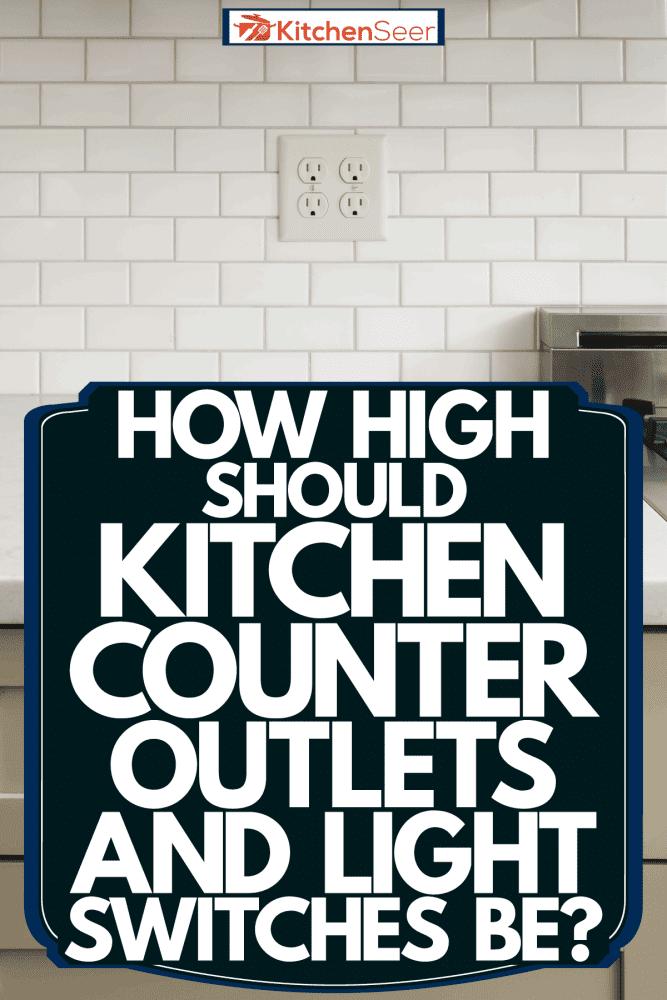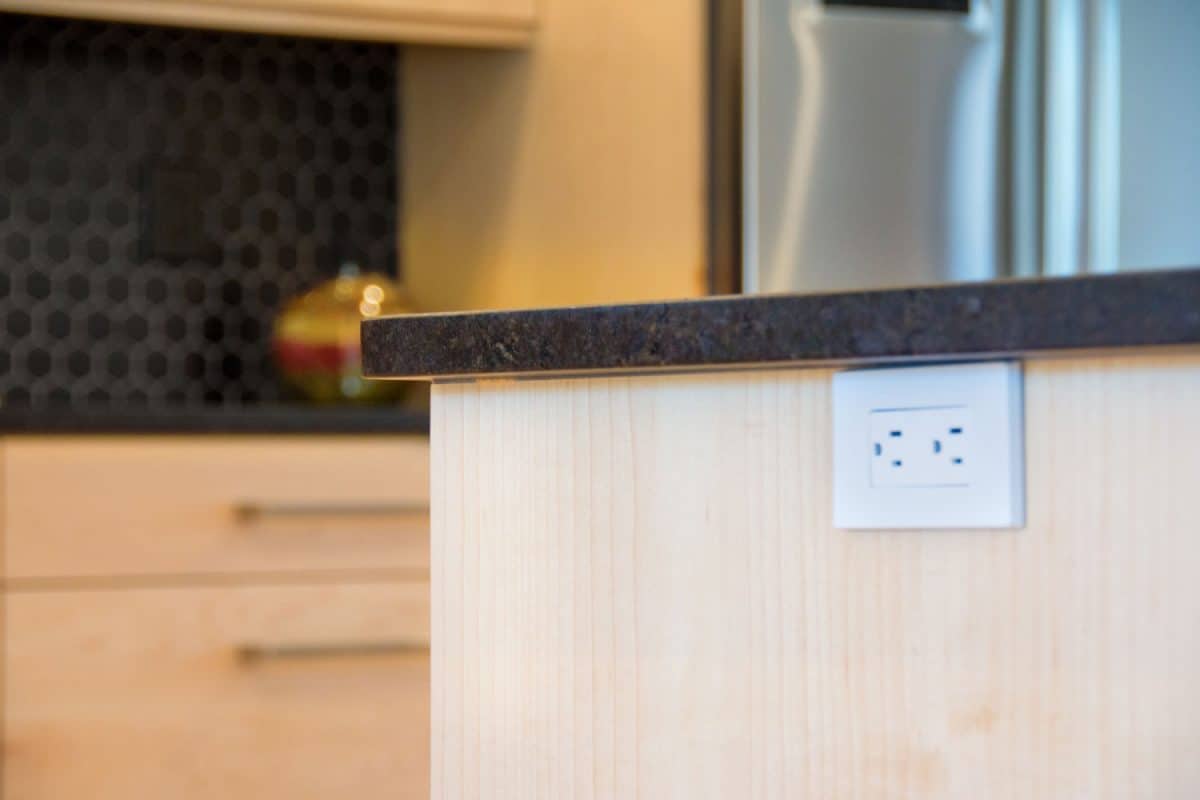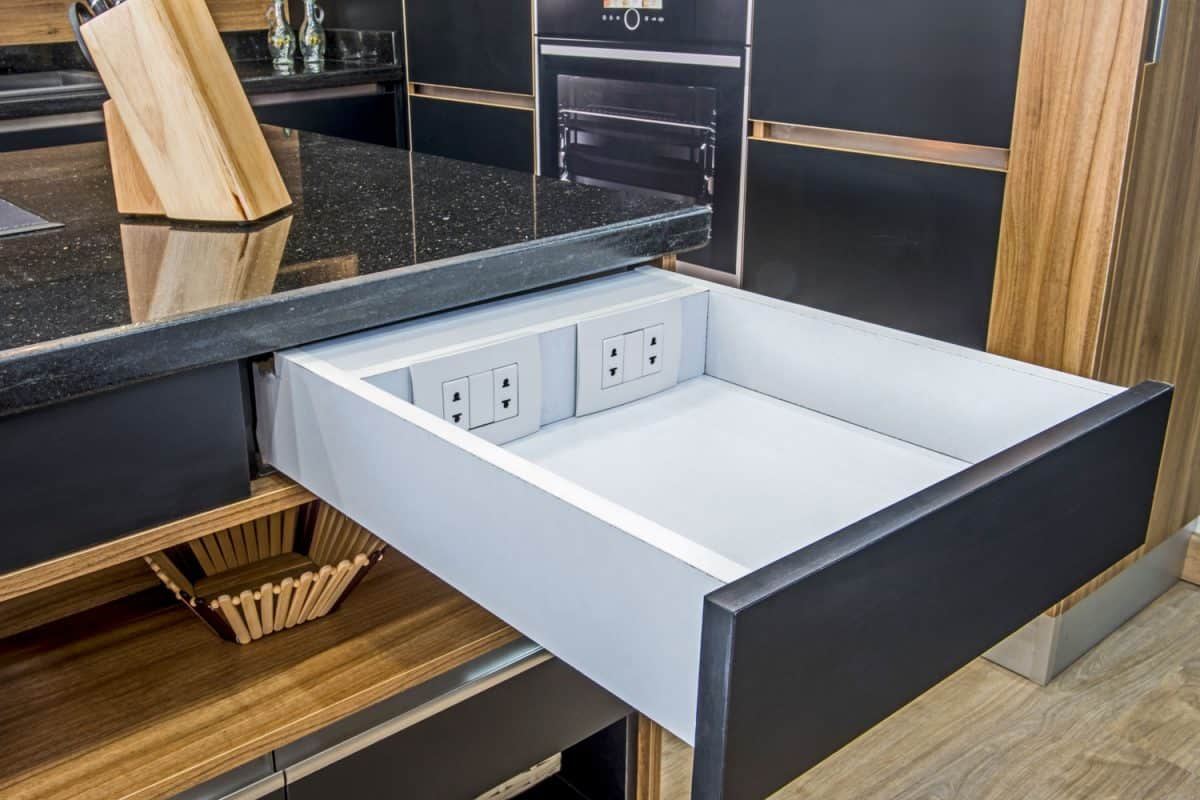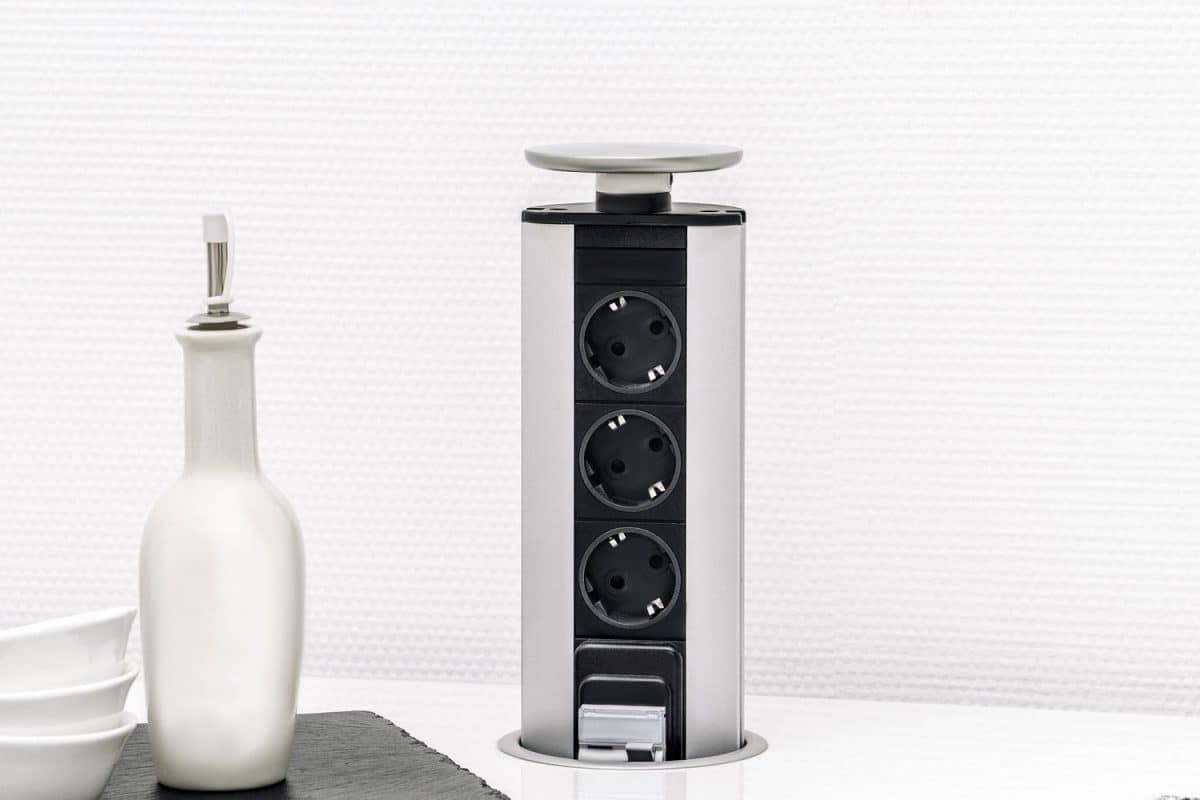Whether you’re remodeling your kitchen or needing to completely rewire one, you may be wondering where exactly the outlets and light switches should be. So, if you’re wondering how high they should be placed on the wall, you’ve come to the right place.
Kitchen counter outlets should be no higher than 20 inches from the top of the counter. There is no minimum height requirement for outlets above a kitchen counter.
You are watching: How High Should Kitchen Counter Outlets And Light Switches Be?
For light switches, they are usually placed approximately 4 inches from the top of the counter. However, there is no minimum or maximum height requirement and can be placed based on personal preferences.
Now you know your kitchen counter outlets and light switches’ typical height, but please keep reading as we elaborate on this further. We’ll discuss what might affect your decision on placement and any code requirements. We’ll also answer some other questions you might have about your kitchen outlets and light switches, including whether they can be installed in the countertop as well.

Height of Kitchen Counter Light Switches and Outlets
When installing light switches and outlets above your kitchen counter, it’s not a good idea to place them randomly or wherever you see fit.
It’s important to consider any code requirements and the practical applications of the switches or outlets. For example, it’s probably a good idea to install the switch for the garbage disposal close to the sink.
Light Switches
Light switches, or even garbage disposal switches, are often placed above the countertop and below cabinets.
When figuring out the height to install them, you should consider the counter’s backsplash and whether you want the switch above or within the backsplash.
What is the code for light switch height?
There is no code requirement for the height of a light switch in any room. However, the standard height light switches are most often installed is 48 inches from the floor.
That being said, the height of kitchen outlets is often different to accommodate the countertops.
A good rule of thumb is to install the light switch 4 inches above the countertop. Some people choose to place their switches halfway between the top cabinets and countertops to make it visually appealing. The choice is ultimately up to you.
How close can a light switch be to a kitchen sink?
In some cases, having a light switch near the kitchen sink makes sense. For example, if you have a light above the sink or you have a garbage disposal, you will need to be able to turn those on without walking away from the sink.
There isn’t any code for how close a light switch can be to a kitchen sink. However, in most cases, light switches are installed at least two feet from the kitchen sink. For perspective, in bathrooms, this distance is three feet.
Outlets
There isn’t a minimum requirement for the height of an outlet on a kitchen counter, but there is a maximum requirement.
The maximum height an outlet above a kitchen counter can be is 20 inches. This is per the National Fire Protection Association’s code, 210.52(C)(3).
If your outlet is placed too high, you may have a problem plugging in appliances like your coffee maker or toaster.
Read more : Kitchen Nightmares: All the restaurants still open in 2022
For example, one black and decker toaster oven comes with a 20-inch power cord. If your outlet is 18 inches from that countertop, you only have 2 inches of extra length between your toaster and the wall.
This maximum height is because small appliances you might have on your counter should not require an extension cord to be used.
Cords on small appliances are short to avoid accidents. Longer cords or extension cords can cause an increased risk of fires and electrocution.
As with light switches, some designers/homeowners choose to put the switch where it fits best visually. Either in the center of the top cabinets and countertops or where it doesn’t interfere with the backsplash design.
Can you put an outlet in a countertop?

An outlet can be placed above your countertop, but what about on the surface? Surface outlets can provide more outlets easily. So good news, you can put an outlet in your countertop as long as it is designed for that purpose.
The NFPA’s code 406.5(E) allows for outlets to be installed into the counter.
The outlet’s manufacturer will state whether it is suitable for countertops, so, as long as you’ve chosen an outlet that says it is specifically for a countertop, you’re fine to install it.


Click here to see Pop Up Outlet on Amazon.
What is the average countertop height?
The average countertop height is 36 inches. However, if the countertop is considered for bar-style seating, the height can reach 42 inches tall.
It’s essential to keep in mind, though, that your countertop does not need to be this height. If you’re on the shorter or even, the taller side, you may want to consider installing countertops that accommodate this.
Whether it’s from cooking or washing dishes, you may suffer from back or neck pain if your countertops are too low if you spend a lot of time in the kitchen.
If this sounds like something you might suffer from, you should also keep in mind that the countertops in your kitchen do not have to be equal in height.
Your island or sink area can be taller than the rest of the countertops or vice versa.
Kitchen Islands
Countertops aren’t always the only location in a kitchen you might want to place an appliance or charge your phone. Kitchen islands are popular in larger kitchens and can be used for various tasks.
Some kitchen islands have sinks, while others are also used as bar seating. Regardless of its purpose, it makes sense to have outlets installed near large tabletop areas.
Read more : How to Clean Kitchen Sink the Right Way
If you need some convincing about whether your island needs an outlet, take a look at our other blog post on the topic here: Does A Kitchen Island Need An Outlet?
Where do outlets go on a kitchen island?
When you have a kitchen island, you have some flexibility about where the outlets can go.
Kitchen island outlets can go on the end or one of the sides of the island, underneath the overhang, inside a drawer or cabinet, or as a popup on top of the island.
On The End or Side

One option is to install the outlet on the side or the end of your kitchen island. If you plan to plug in small appliances or something you might not want to unplug for a while, this is a good option. These outlets are the most visible.
Underneath The Overhang

If you have an overhang or bar area to your kitchen island, you can also place an outlet under there. Less conspicuous than a side or end outlet, they can also be used for small appliances or chargers.
Inside A Drawer or Cabinet
If you don’t mind having a drawer or cabinet open while you use an appliance, this might be a good option for you. You’re able to keep the outlets from being seen when not in use. They are also a great place to keep phone chargers.
Popup
A popup outlet can offer the best of both worlds. It’s easily accessible and easily hidden. This is a newer concept but is available in a variety of different designs and styles.
How do you hide an outlet in a kitchen island?
We mentioned this briefly in our examples of different kitchen island outlet locations, but let’s elaborate. Not everyone wants their outlets to be on display. After all, some styles can be unsightly.
You can hide an outlet by choosing to install it in a discrete location or by opting for popup outlets. You can also hide an outlet by changing its appearance.
One option is to choose outlet plates that match your cabinets, so they are camouflaged within the cabinetry. You can also purchase outlet covers, so the outlets are completely covered when not in use.
Click here to see Outlet Plates on Amazon.
Final Thoughts
Hopefully, our article has helped you realize that you have quite a bit of flexibility when it comes to where you can put kitchen outlets and light switches.
The only code you have to make sure you follow is the outlet not being installed greater than 20 inches from the top of the countertop. The rest of the spacing is up to you!
For more reading, check out these other blog posts:
How To Arrange Appliances On A Kitchen Counter
How Deep Are Kitchen Cabinets And Countertops?
Source: https://gardencourte.com
Categories: Kitchens

